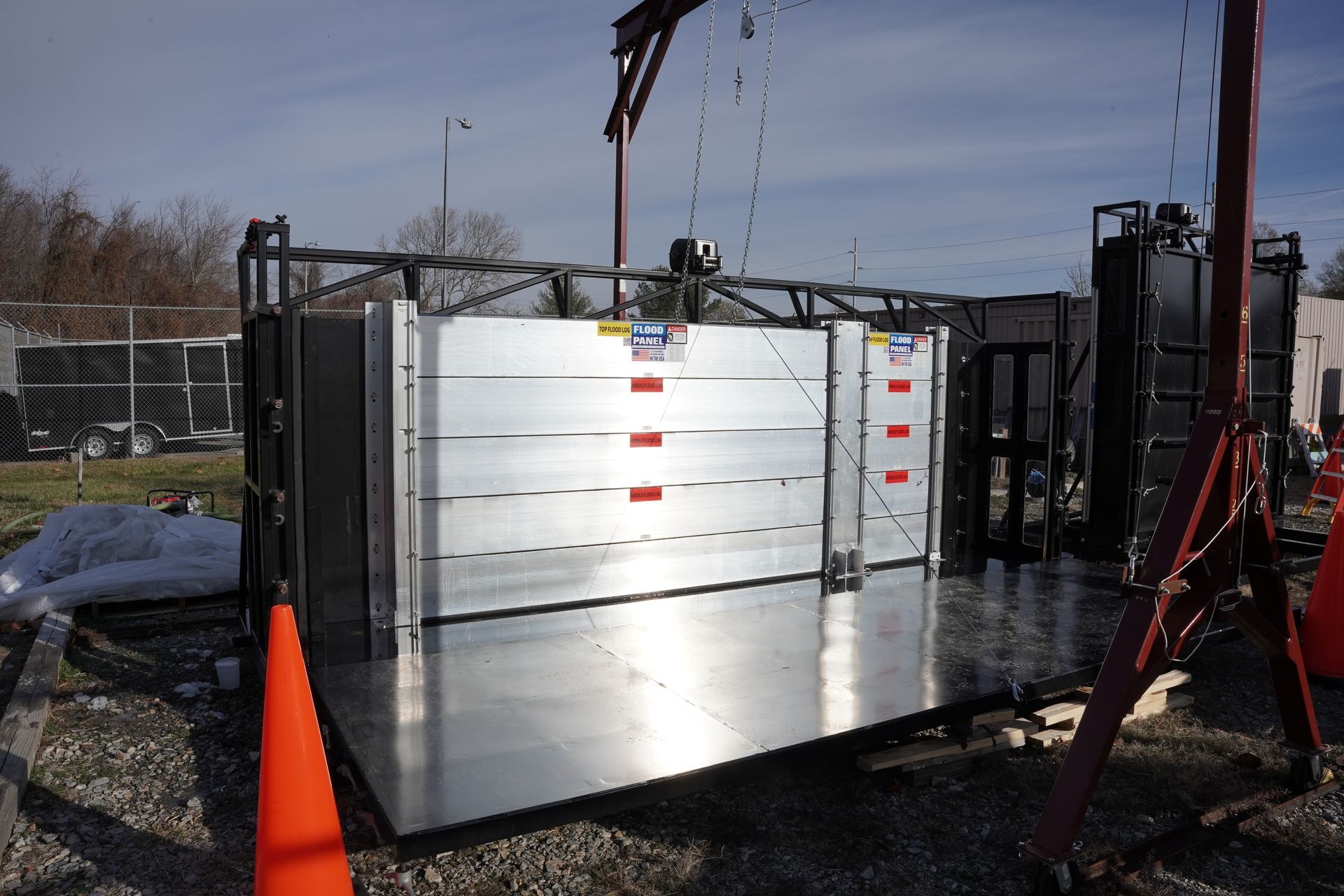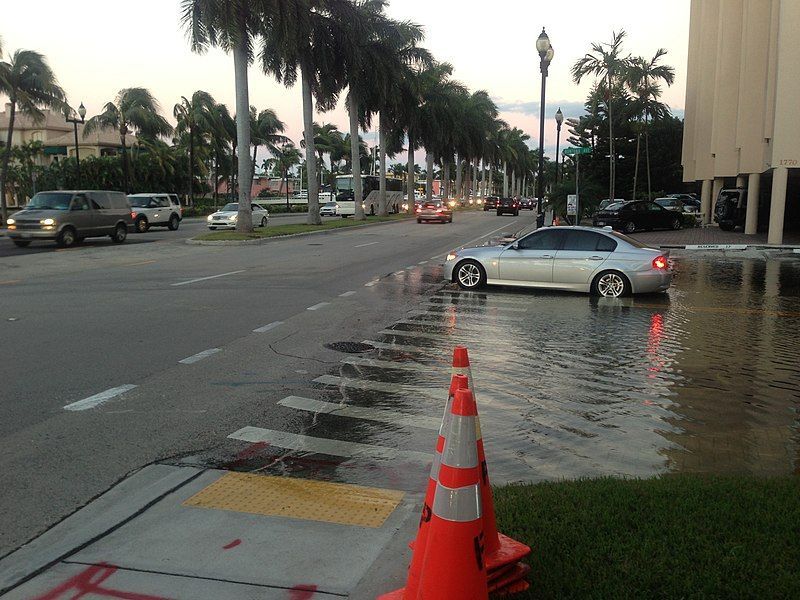Page 2
Media Contact
Email: media@floodpanel.com
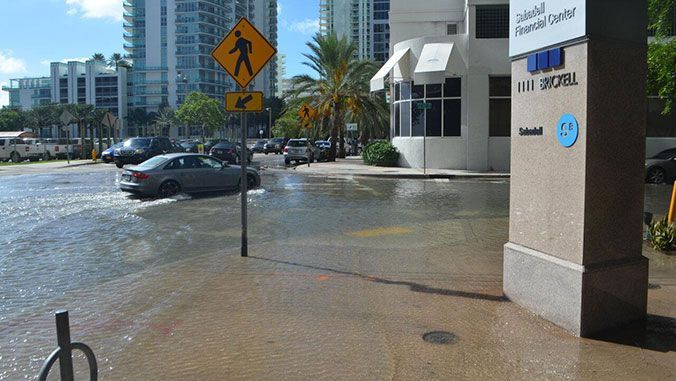
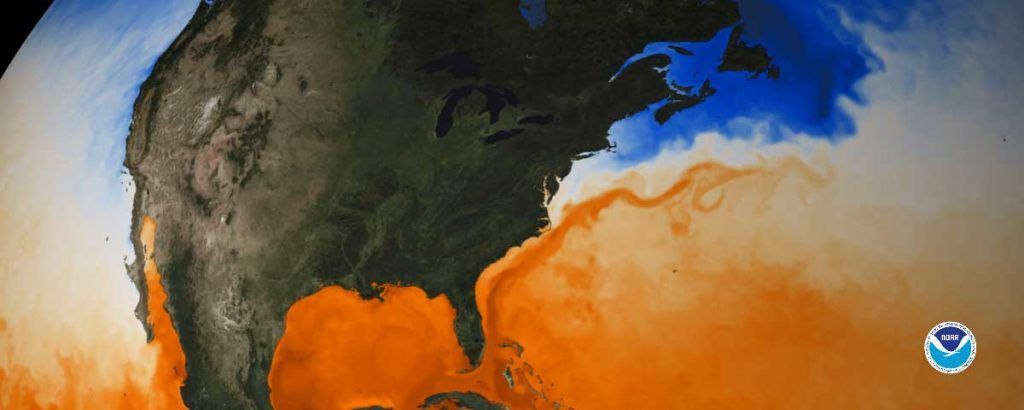
Image: Graphic visualization map of Gulf Stream seen through sea surface temperature created by NOAA NESDIS.
The mighty Gulf Stream is an invisible force that has a vast impact on the entire planet, but very few people even know what it is! Many might guess that the Gulf Stream is a wind system, but they would be wrong. The Gulf Stream is actually a powerful ocean current; one that has a significant effect on far-flung weather systems, the Atlantic hurricane season, and annual rainfall levels for scores of countries. The influence of the Gulf Stream is felt most acutely throughout the ‘Western Hemisphere’, but the domino effect caused by this massive ocean current can sometimes determine weather patterns on the other side of the planet.
The Gulf Stream, as its name suggests, originates in the Gulf of Mexico. It is a massive column of warm gulf-water that flows in a loose formation about 60 miles wide. After it exits out of the Gulf, it moves northwards up the coast of the eastern United States and into Canada. This is the reason why seawater on East Coast beaches will reach a balmy warm temperature that delights bathers. On these beaches, temperatures of 80+ degrees Fahrenheit are common, whereas the ocean water on the west coast of the US will rarely rise above 70 degrees.
After moving up the eastern coast of the US and Canada, the Gulf Stream then crosses the Atlantic and begins descending along the western coast of the UK and Europe. This influx of warm water is why some beaches of Ireland and England sport palm trees, although these countries are at the same latitude as Newfoundland and northern Canada. After brushing against the European land masses, the Gulf Stream continues south to the great continent of Africa, and it is after leaving this region that problems may develop.
As the Gulf Stream moves south across the western coasts of Europe, the relatively warm water of the ocean current pushes colder water before it. In a recent press release from the Potsdam Institute for Climate Impact Research (PIK), climate scientist Stefan Rahmstorf describes the Gulf Stream as a “giant conveyor belt” that moves warm surface water north while sending cold, deep water back down south. He notes that the Gulf Stream moves 20 million cubic meters of water per second- approximately 100 times the flow of the Amazon River. This cold water is pushed from the African coast into the very important waters that lie between Africa, South America, and the Caribbean region- this is the spawning ground for Atlantic hurricanes.
Recent studies have indicated that the speed at which the Gulf Stream moves is slowing down considerably. This is a topic of concern among meteorologists and climate scientists, as any changes to the Gulf Stream will have significant ramifications to weather systems. The decrease in speed is not yet fully understood, but if it were to become permanent it is possible that the great Gulf Stream could be altered in such a way that major climate repercussions would result.
This year, the National Oceanographic and Atmospheric Association (NOAA) is predicting yet another ‘above average’ hurricane season. Last year (2020) was so active that it broke all the records. There were so many named storms in that year that the entire list of pre-assigned storm names was used up, as well as the full list of Greek names that serves as a back-up supply. In 2020, there were 30 named storms, of which a record-breaking 12 made landfall on the US continent.
The World Meteorological Organization (WMO), which is the agency that names the storms, realizes that this is the way of the future. This organization has now prepared a second list of names to be used in the event that all 21 names on the regular list are used up. Greek names will no longer be used, and the second list of names will automatically kick in when the 22nd named storm is formed. This is an indication that more-frequent hurricanes are now considered probable. It’s not seen as likely that 2021 will equal the hyperactive hurricane season of 2020, but neither will it be a quiet year. The first named storm of 2021, Ana, arrived early in the season, which is thought to be an indicator of a heavy storm season. If the all-important Gulf Stream permanently alters its ancient habits in any significant way, the ripple effect is likely to have a major impact on the entire planet, and frequent hurricanes will be at the top of the list.
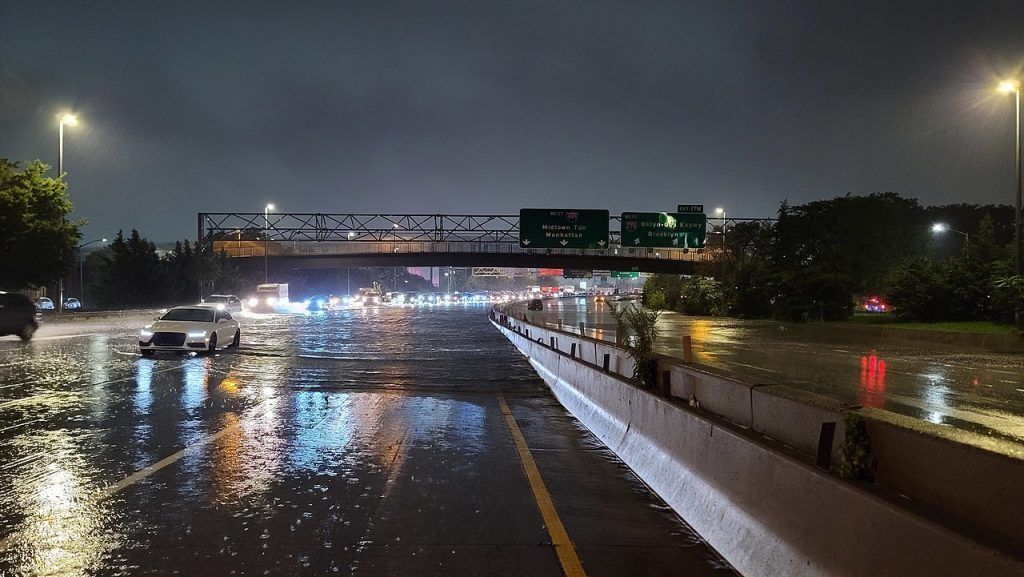
The frequency and magnitude of extreme weather events in recent years have exposed many of the country’s treasured historic buildings along the nation’s coasts and rivers to damage caused by floods. This threat has driven urgency for flood mitigation strategies to protect history.
According to the National Park Service, “Some historic properties that have never flooded before may now be exposed to this risk, and those that flooded infrequently in the past may experience more instances of flooding or of water reaching higher levels than ever before.”
The NPS consulted with preservation experts, including Flood Panel, to develop new guidelines to help property owners adapt historic buildings to be more resilient to flood risk. The NPS Guidelines on Flood Adaptation for Rehabilitating Historic Buildings provide examples of projects, and more than 100 photos and illustrations, to help owners choose the best flood mitigation solutions that protect and preserve historic sites from flood damage. Read the NPS news release.
Flood Panel has extensive experience designing and building custom flood proofing solutions for historic buildings across the country. Flood Panel products and photos are featured on pages 50 and 51 of the NPS guide, including a photo from Revolution Mill, on the National Registry of Historic Places in North Carolina. Read the Flood Panel news release.
“Historic buildings pose a unique challenge for flood proofing. The solution must protect the site and preserve the history,” said Tom Osborne, President of Flood Panel. “We are honored to share our experience designing and building custom flood solutions for historic sites that do both.”
Flood Panel’s end-to-end approach to flood mitigation is ideal for historic sites. It includes building evaluation, custom design and manufacturing, plus expert installation, annual inspection and maintenance provided by its National Corporate Partner National Flood Protection.

Flood waters surround Revolution Mill in North Carolina.

Photo: Rio Grande City, Texas, July 26, 2007 — FEMA Public Assistance Specialists Sheila Luster and and William Ciarelli inspect the Starr County Memorial Hospital with administrator Thalia Munoz to determine if the county will be eligible for federal assistance to offset expenses caused by the recent flooding. Bob McMillan/FEMA Photo
When a community suffers a flooding emergency, there are often injured people who need immediate medical assistance. But what happens if the nearest hospital is also affected by the flood? What if the hospital itself is flooded?
Hospitals present numerous challenges as far as flood protection. Because the patient areas must be kept clean and hygienic, it is very common for electrical equipment to be housed in basement areas, even though the loss of electrical power at a hospital can be deadly for patients who may rely on life-sustaining machines. Most hospitals have emergency back-up power systems, but these are not sufficient to weather lengthy outages. One facility in Houston was left without power for a full two weeks after a hurricane flooded its first and second floors, knocking out the electrical systems. Patients at this facility had to be evacuated, which can be a risky and complicated operation.
Once a medical facility floods, there are many epidemiological issues that would not be present in a non-medical building. For eaxample, after any large intrusion of water, there will be mold issues left behind. In the best case scenario, the water may have been relatively clean freshwater. But in most cases, the water is tainted with sewage or other pollutants. If dirty or polluted water seeps into walls and flooring, it often cannot be adequately cleaned to hospital standards. What ensues is a very costly and time-consuming process of removing the affected materials, cleaning and disinfecting the foundation, and installing new floors and walls. This operation cannot take place while patients are in residence, so there may be a need for patient evacuation during the repairs. The process is pain-staking, extremely expensive, and requires a lot of time.
Given the extreme measures to which a medical facility is subjected after a flooding event, it is no surprise to learn that these facilities go to great lengths to prevent flooding and to protect vital operations. Because hospitals play such a critical role in society, and their full capacity is required during disasters like flooding events, these facilities are given extra protection from floods while still in the blueprint stages. The most common form of protection for hospital buildings are flood barriers or gates that automatically deploy at the first sign of trouble. These flood barriers are best when built into the original design of the building, but can also be retrofitted to an existing building. As we have seen a remarkable geographical expansion in active flood plains across the country, there are many older hospitals that were once flood-safe, but are now at risk.
Fortunately, there are commercial companies that can install permanent or temporary flood protection devices that can reliably defend even huge medical compounds. Depending on the type of items or buildings that must be kept dry, there are several strategies, including:
- Permanent waterproof casings for outdoor HVAC units.
- Temporary flood panels that can be installed quickly by maintenance staff.
- “Puddle guards” that can be installed in doorways to block small amounts of water.
- Automatic flood panels that deploy instantly without need for human engagement.
- Flood doors that can be securely closed by staff when needed.
All of these types of flood protection devices and systems can be customized to fit any existing building, and they can also be fitted during the planning and construction of new buildings. Because society relies on functioning hospitals in particular during a disaster, it is of utmost importance that medical facilities be protected by the latest technology. We have seen great strides in flood protection during the past decade, and this expertise will increasingly be required as climate change brings ever more frequent natural disasters to our doorstep.
